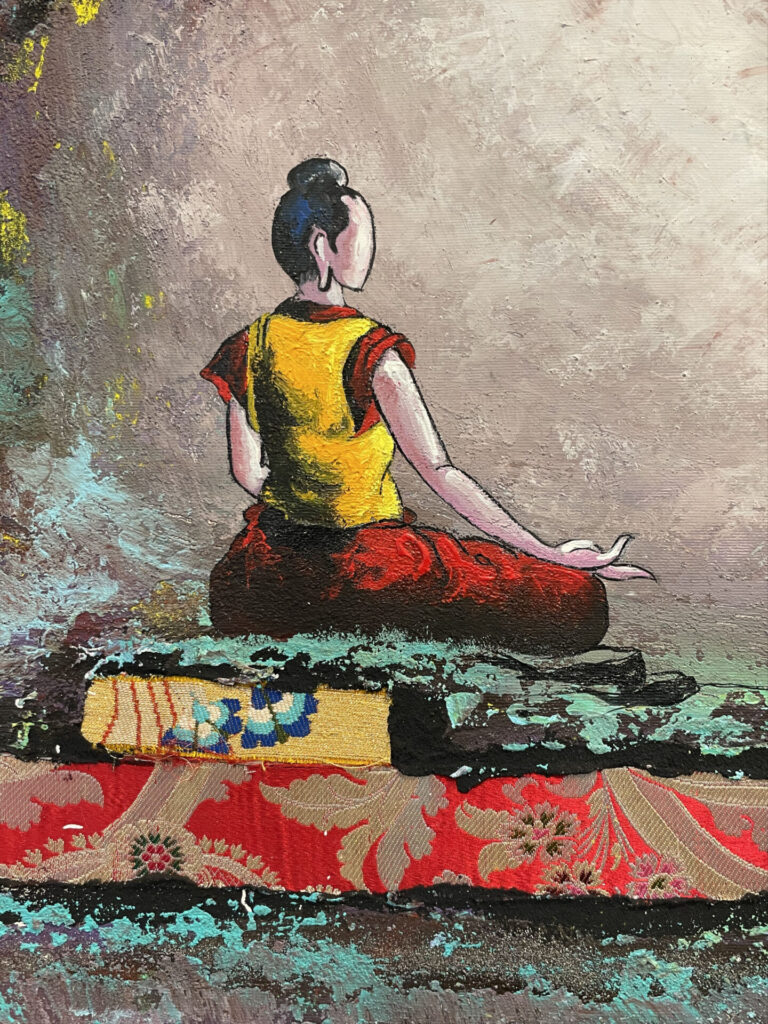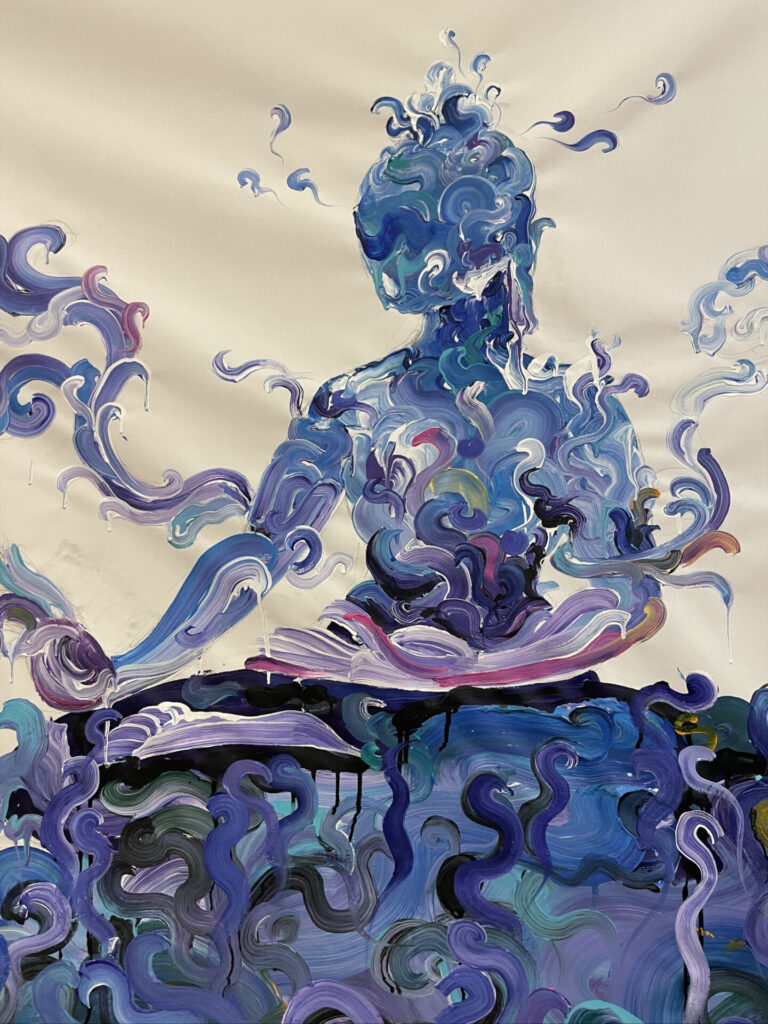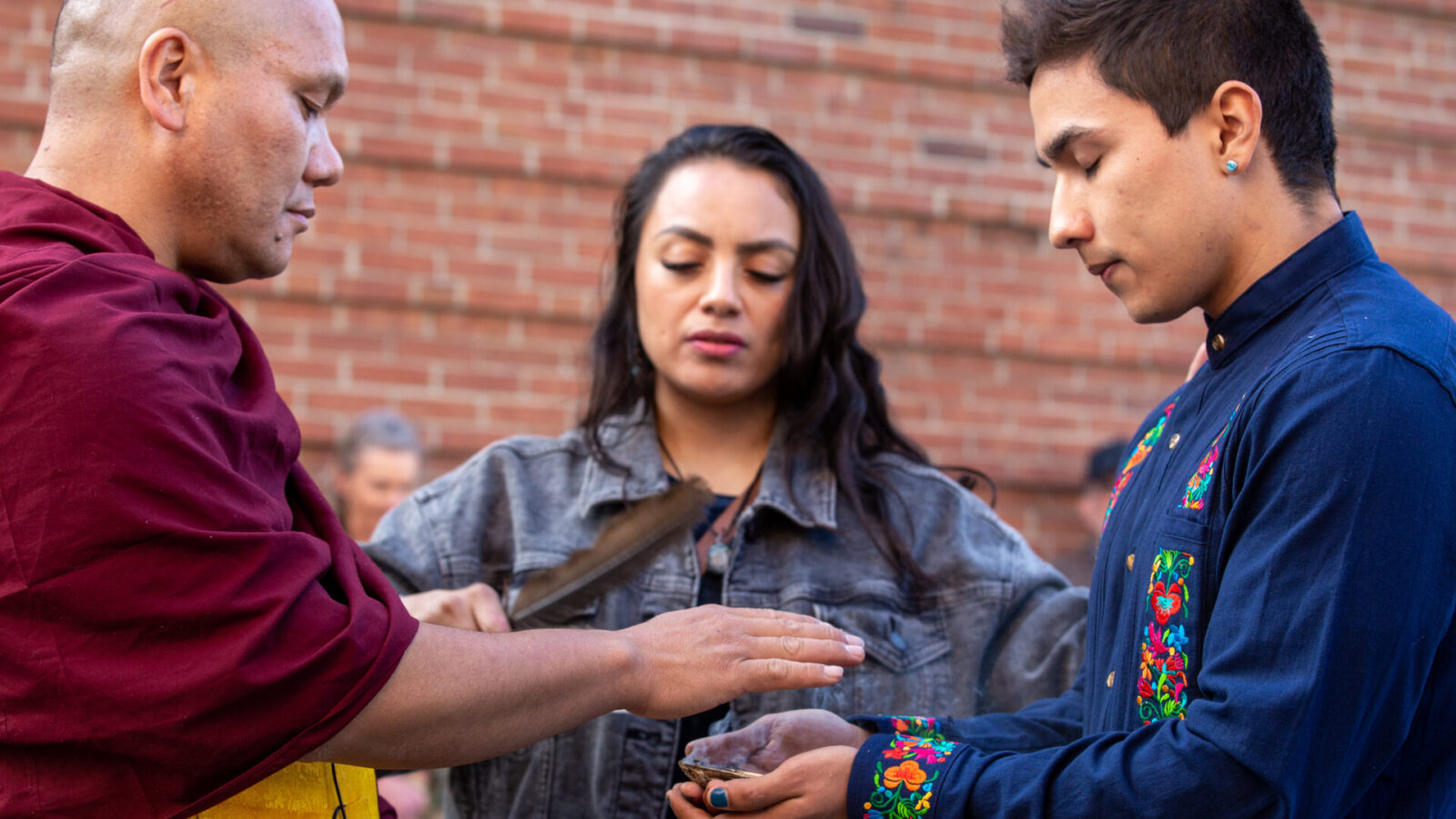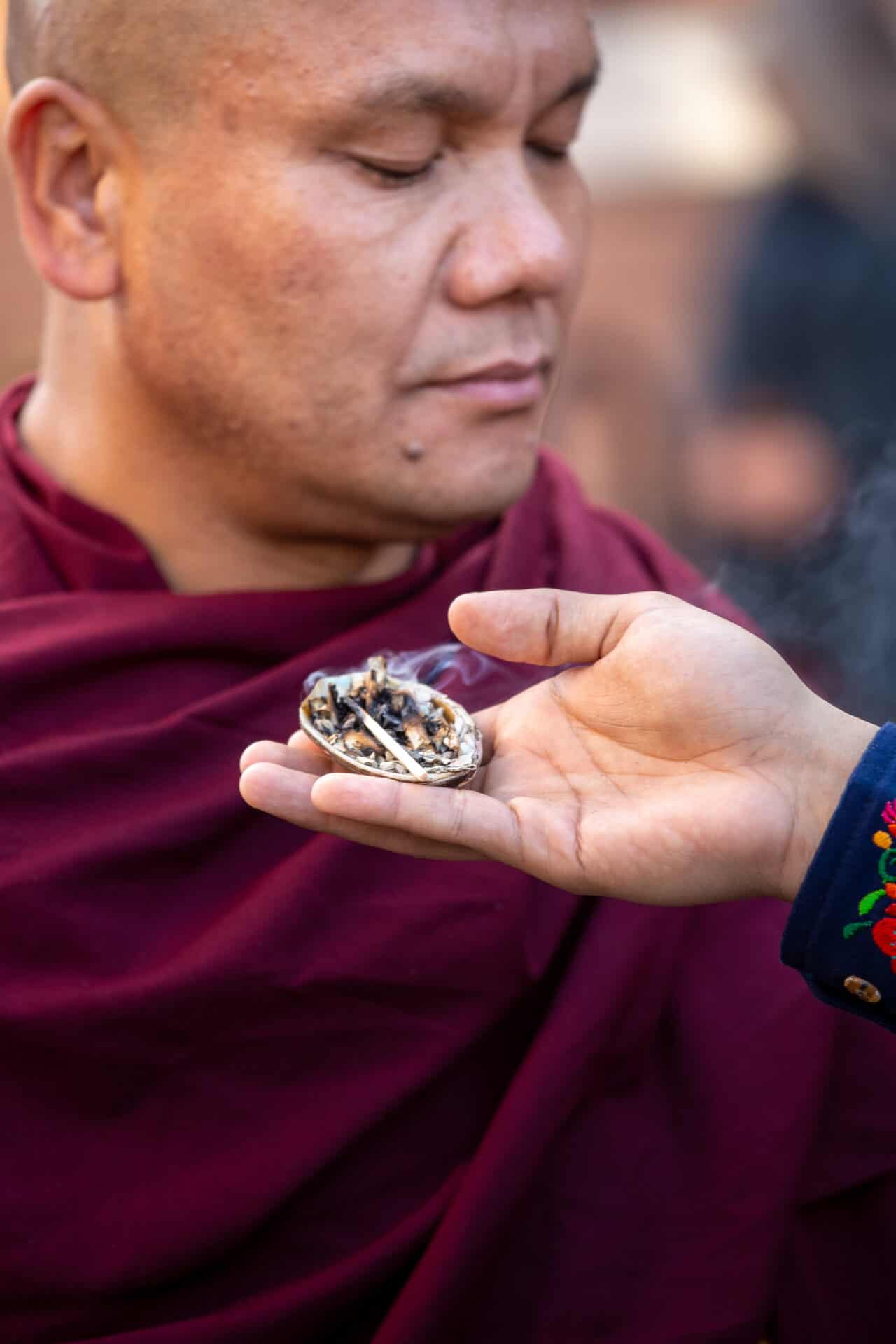Smoke lifts with a scent of herbs and resin. A double-headed drum turns in rhythm and sounds a beat. We are standing in a meeting of ritual spaces.
Isaac Rivera, Williams College ’26, honors his Zapotec and Chinantec roots, and Daisy Rosalez ’25, a member of Pueblo Coca, and Angela E. Mendieta ’25 light a smudge and give a blessing — as Tibetan Lama Tashi Norbu prepares to offer Rivera a tattoo drawn from Buddhist iconography and a mantra crafted uniquely for him.
We are all standing in the open outside the Williams College Museum of Art. Lama Tashi Norbu has come to the college in a weeklong artist residency, and the museum has opened for an after-hours look at his work among the contemporary global Tibetan artists in Across Shared Waters.
He has performed around the world, and tonight he is offering an artform he has in a way created — and gathering people together to share in it. He and WCMA are celebrating, he says, as tattoo art becomes part of an artwork and a performance in a museum in the U.S. for the first time.
He has made a personal mantra for Rivera, taking some measure from the stars on the day Rivera was born, and drawn an image in relation to one pf the thousand figures of Buddha abstracted into geometrical patterns. Tonight he will give Rivera the tattoo himself, with with North Adams artist Alexis Rosasco, owner of AR Designs Fine Art & Tattoo, here to lend a hand.
Rivera has asked to be part of the evening, says Roz Crews, interim assistant curator of programs at WCMA — Lama Tashi Norbu and the college invited people in the community to show their interest and chose Rivera from among some 30 volunteers who explained what draws them to the idea.
Rivera has explained to them some of the significance of tattooing and body art as part of his faith and culture, she said — and he has talked about the strength of sharing between cultures, meeting across borders and oceans … offering respect.
He and his friends open with a land acknowledgement to the Stockbridge Munsee community, the people of the Mohican Nation who have lived in these hills for centuries. Though they were forced West in Colonization, they keep in close touch and always have, and they often return here now from their community in Wisconsin.
Rivera has asked Rosalez to open this evening, and he turns to her. Mendieta speaks as Rosalez lights the smudge and seems to hold the flame in one hand, and the three students stand together, sharing thoughts of roots and strength, and taking time in this space together.
They cup the smoke and let it warm the breathing space around them. They offer it to Lama Tashi Norbu, and the flute turns and ripples in the air, and we stand in an informal circle, letting time slow down.
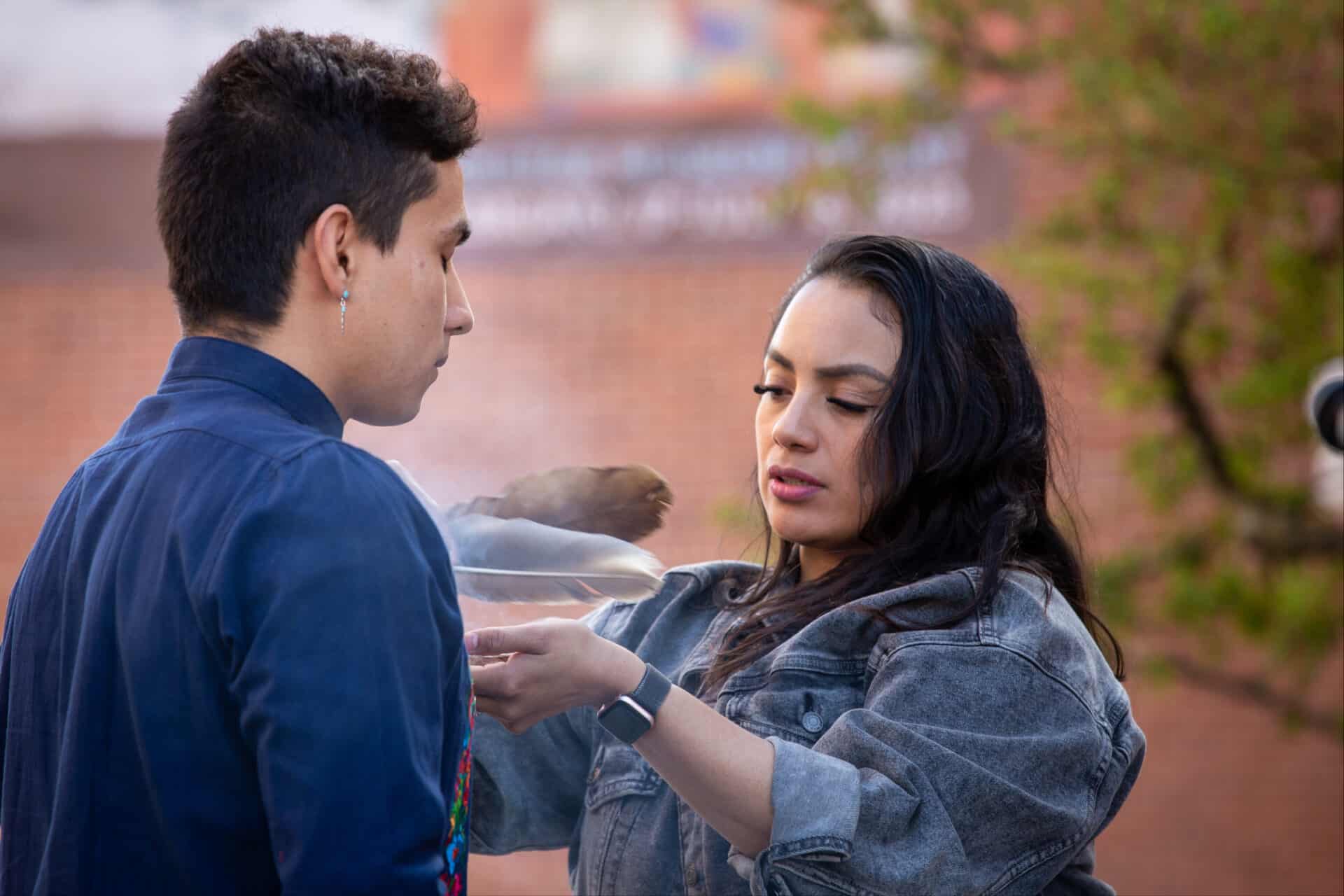
Isaac Rivera '26 and Daisy Rosalez '25 share a moment of ritual and sacred smoke in the courtyard outside WCMA. Press photo courtesy of the Williams College Museum of Art
The three students walk around the circle, inviting us in too for a moment, and then they turn with Lama Tashi Norbu, leading the procession, to walk across the courtyard, through the museum, up the stairs and across the second floor, into the rotunda.
And the room is vibrating. I have never heard singing like this. My small acquaintance with Buddhist music has mostly come in chanting in a single tone — The room feels lapped in voices rising together, and they are all his.
His voice is rising and falling in overlapping waves, sombre and glad and soaring. Each line comes back, soothing and shifting, like surf over granite, and he seems to sing with the pitch of a tenor and the resonance of a bass, high in the range and low in the chest.
Guitarist Craig Douglas from Springfield loops his voice as they improvise together. They have been recording throughout the week, Crews tells me. Flutist Emily Dupuis and percussionist Minxin Li, both from Williamstown, are playing with them now, in high rhythms touching as lightly as rain.
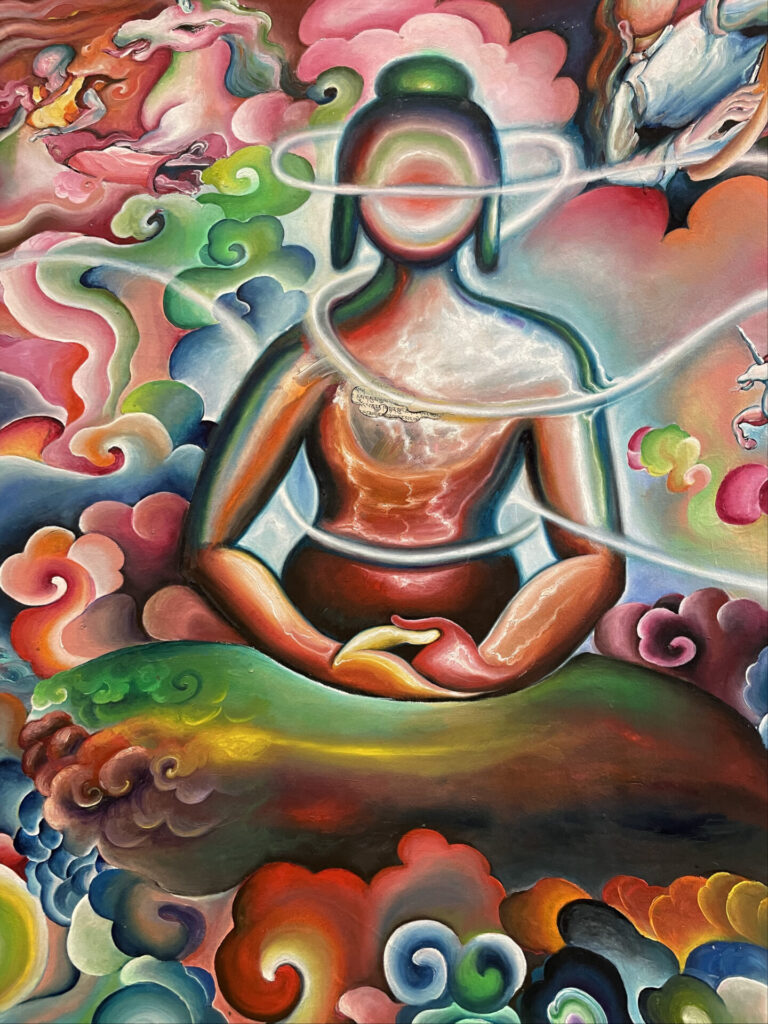
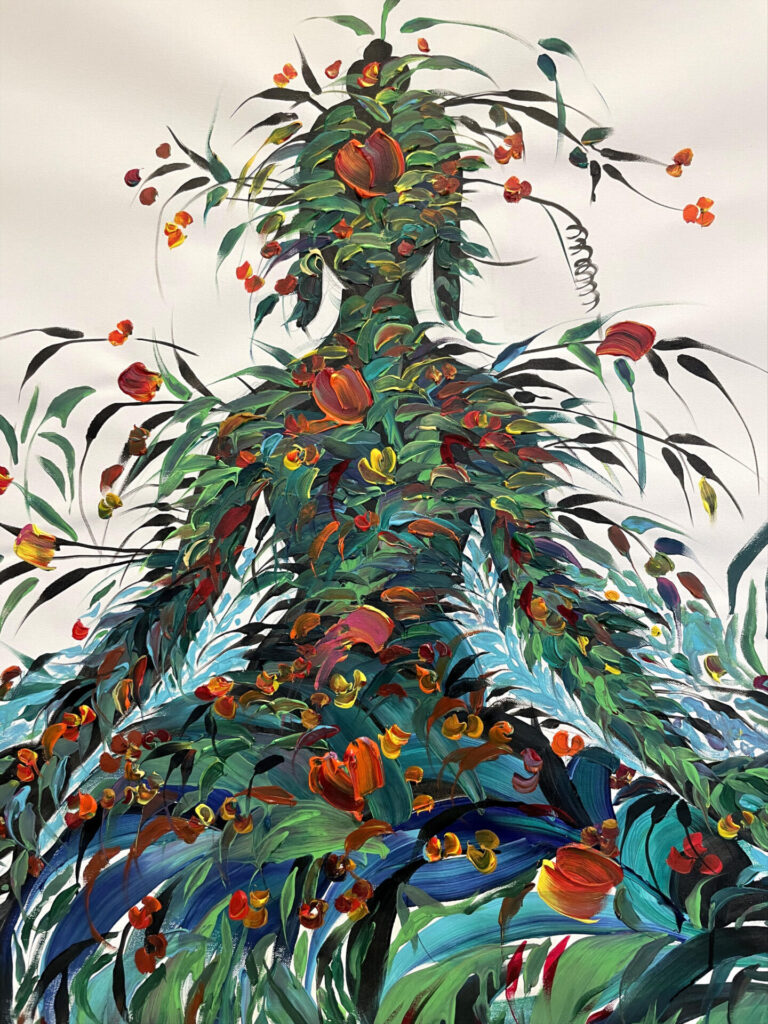
Lama Tashi Norbu paints reimagined Buddhas informed by his training as a thangka painter. Press photo by Kate Abbott courtesy of the Williams College Museum of Art.
Lama Tashi Norbu is singing the mantra he has created, and he will go on singing all through the ritual, for more than an hour.
Rivera walks into the center and sits at a table, resting his head and arms. He is getting the tattoo on his back, between his shoulders and below the name of his neck. People are ringing three-quarters of the wall, and WCMA has set up a screen for anyone who cannot see the tattoo and would like to.
But in fact once Lama Tashi Norbu has taken his seat close enough to work, the screen will mostly show his hands. I had not realized before how much tattooing, by nature, means closeness. For one person to create an image on another person’s skin, they have to be near enough to touch.
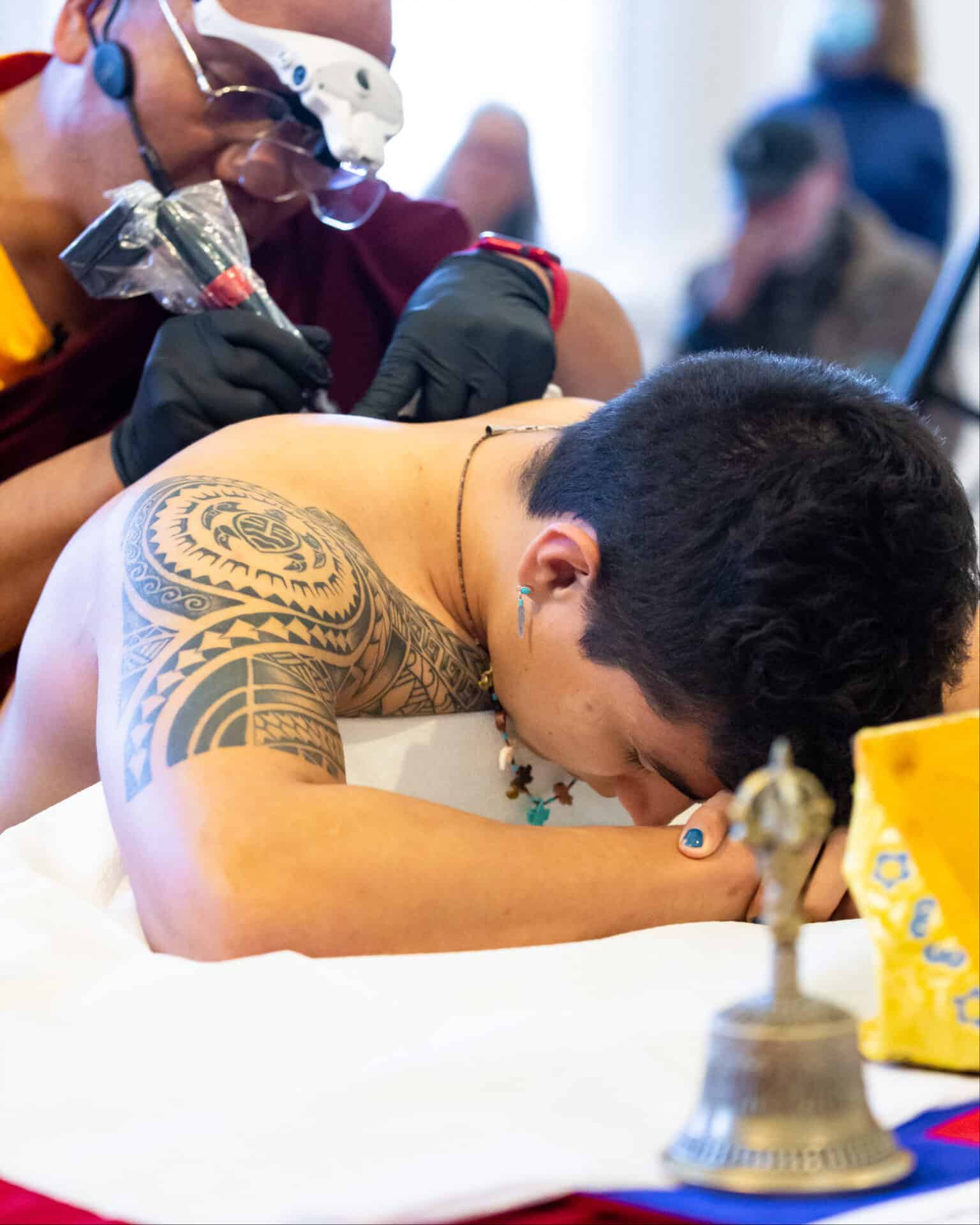
Artist Lama Tashi Norbu applies a tattoo he has designed for Isaac Rivera, Williams college '26. Press photo courtesy of the Williams College Museum of Art
This part of the artform is new to him, Lama Tashi Norbu tells us. He thinks of it as creating a fusion of Tibetan and Western art. They often meet in his work. He has trained as a traditional thangka painter in Dharamsala, India, and as a Western artist in Belgium. In body art though he is looking to the West.
He has created mantras for people at many points in their lives, he says. Tattooing is not a traditional part of the Buddhist practice, but he began to study it because people would often want tattoos of the mantras he made for them, and he saw them misapplied … even upside down. So he learned a new artform to help them.
He follows Buddhist tradition to create these personal mantras, he explains. In the Tibetan faith, often a Lama will create one for someone at the end of their lives, to help their spirit make the journey from one lifetime to the next. In the 49 days after someone dies, in this time called the Bardo, their soul moves through an intermediate, state after death and before rebirth.
He feels an aptness in talking about loss and revival and persistence of spirit now, after the past three years, when so many people have lost people they love. His mother died during the pandemic, he tells us.
And I remember his voice when we first talked this winter, when he said Tibetan artists have a call to preserve their culture under the pressures that have moved against it.
His grandfather told him that he would become a Lhabri, he says, an artist who paints gods and goddesses. And today he lives in the Netherlands, near Amsterdam — because, like most of the artists in Across Shared Waters, like thousands of Tibetans around the world — he cannot go home.
On the walls around us, he has hung new paintings from his week in residence here. He has drawn figures of the Buddha drawn in strictly accurate iconometry — in the forms he learned and practiced with care and precision in his training. But here one is filled with leaves and flowers in thick dollops of paint, deep green and fire red and yellow.
Here Buddhas sit in meditation while monks in saffron robes are flying overhead. And here a Buddha swirls into the surf.
